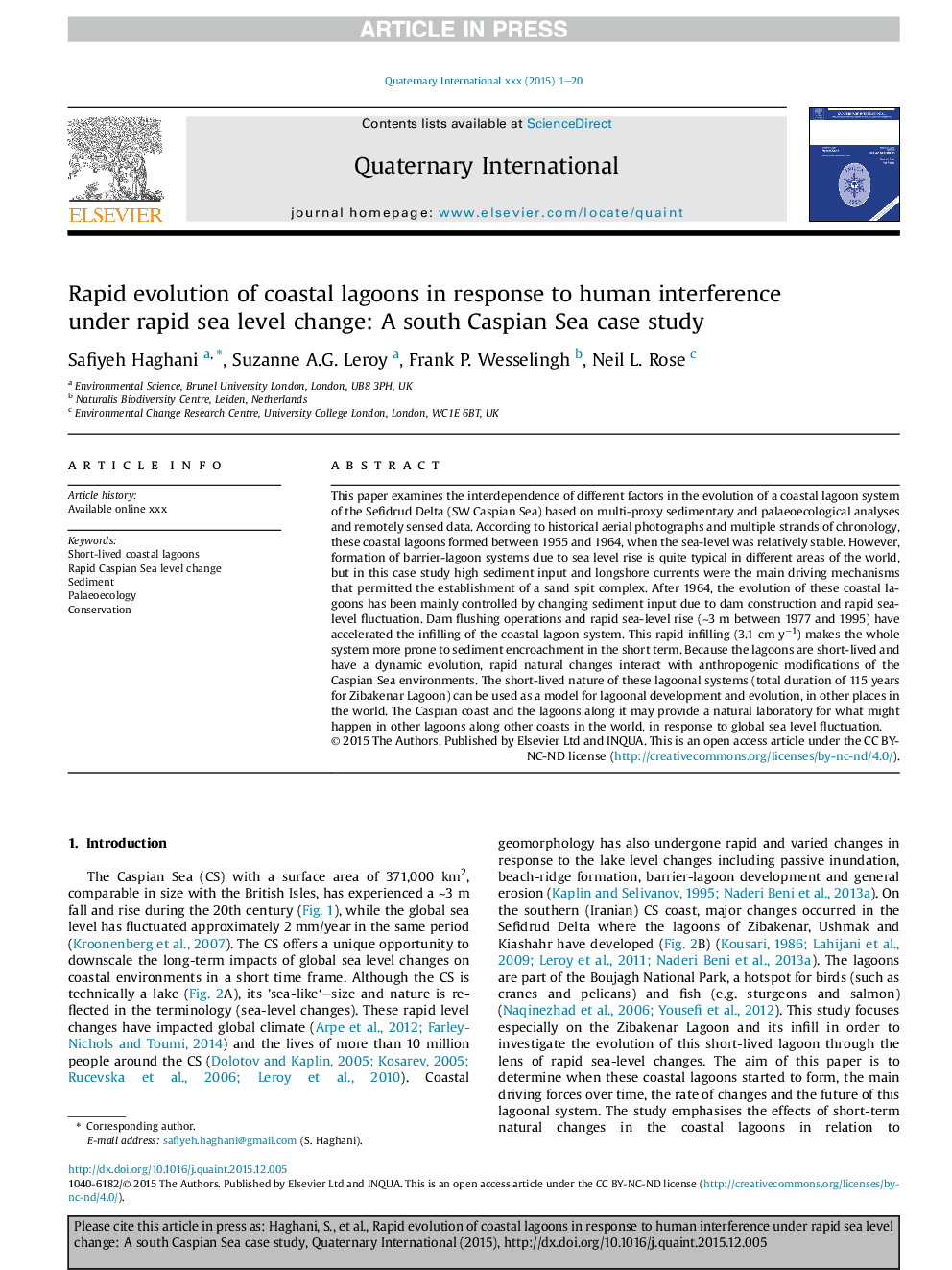| Article ID | Journal | Published Year | Pages | File Type |
|---|---|---|---|---|
| 10500872 | Quaternary International | 2016 | 20 Pages |
Abstract
This paper examines the interdependence of different factors in the evolution of a coastal lagoon system of the Sefidrud Delta (SW Caspian Sea) based on multi-proxy sedimentary and palaeoecological analyses and remotely sensed data. According to historical aerial photographs and multiple strands of chronology, these coastal lagoons formed between 1955 and 1964, when the sea-level was relatively stable. However, formation of barrier-lagoon systems due to sea level rise is quite typical in different areas of the world, but in this case study high sediment input and longshore currents were the main driving mechanisms that permitted the establishment of a sand spit complex. After 1964, the evolution of these coastal lagoons has been mainly controlled by changing sediment input due to dam construction and rapid sea-level fluctuation. Dam flushing operations and rapid sea-level rise (â¼3 m between 1977 and 1995) have accelerated the infilling of the coastal lagoon system. This rapid infilling (3.1 cm yâ1) makes the whole system more prone to sediment encroachment in the short term. Because the lagoons are short-lived and have a dynamic evolution, rapid natural changes interact with anthropogenic modifications of the Caspian Sea environments. The short-lived nature of these lagoonal systems (total duration of 115 years for Zibakenar Lagoon) can be used as a model for lagoonal development and evolution, in other places in the world. The Caspian coast and the lagoons along it may provide a natural laboratory for what might happen in other lagoons along other coasts in the world, in response to global sea level fluctuation.
Keywords
Related Topics
Physical Sciences and Engineering
Earth and Planetary Sciences
Geology
Authors
Safiyeh Haghani, Suzanne A.G. Leroy, Frank P. Wesselingh, Neil L. Rose,
